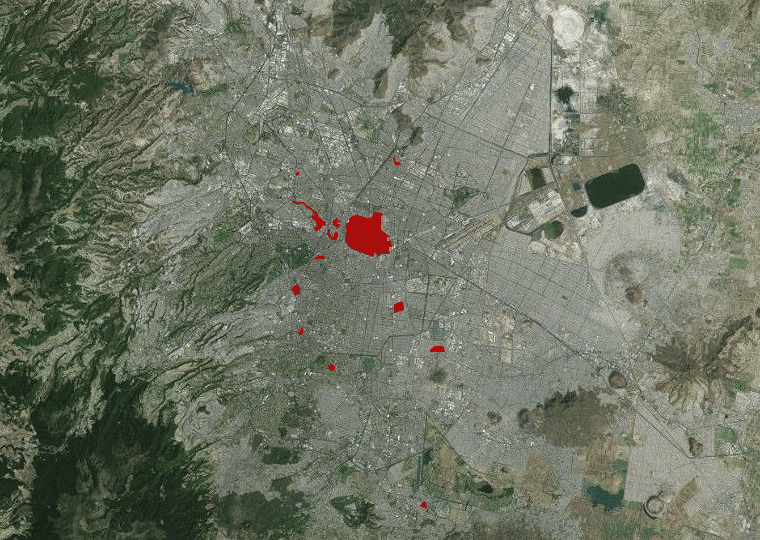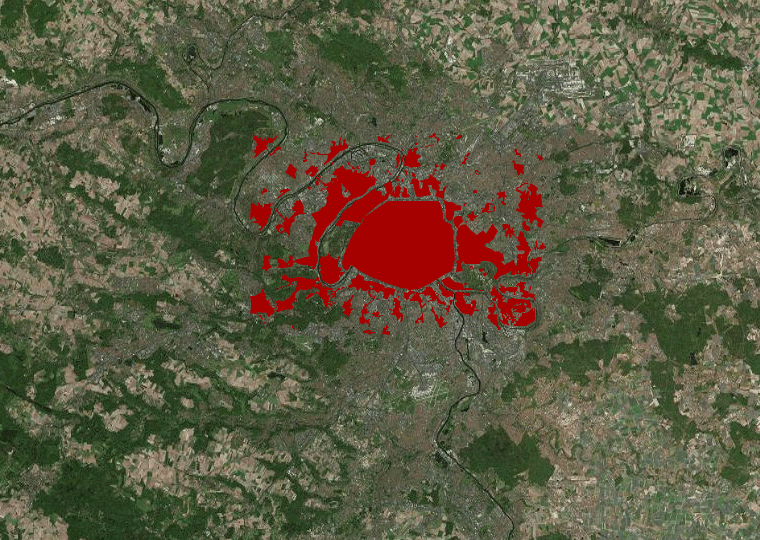Make Cities Explode in Size With These Interactive Maps
From Los Angeles to Lagos, see how megacities have been taking over the planet during the past 100 years
Around 5 B.C., Rome became the first city in recorded history to reach 1 million residents. It took nearly two millennia for another city hit the same milestone: London, in the 1800s. Then came the Industrial Revolution of the 19th century, which sparked an urban explosion as people flocked to cities seeking manufacturing jobs born out of a new, mechanized society. At the same time, world population was growing at an unprecedented rate—between the 1800s and today, the number of people living on Earth has risen six-fold.
By 1950, New York’s population was greater than 10 million, making it the world’s first megacity. Now, less than a century later, the world boasts 31 megacities. The interactive maps above chart urban growth in 10 of the largest modern cities and explore some of the reasons each one grew into a notable metropolis. Population is shown as either “urban extent” or “urban footprint”—terms chosen to distinguish between historical data sets and more recent maps of urban boundaries.
The history of how a city has grown can be challenging to chart. London’s expansion is easier to study, because reliable maps exist from as early as the 16th century. But for cities like Nairobi, which only recently became major economic centers, dependable records can be more difficult to come by. Still, understanding the rise of megacities will be crucial to our health and security as the human population continues to swell.

Today the world’s megacities account for 15 percent of global GDP, and that figure is projected to rise to 20 percent by the end of the decade. Economic activity within megacities doesn’t necessarily translate to prosperity for residents—in many cases, urban migration compounds existing problems, such as lack of infrastructure or destruction of wild lands. In the 1960s and 1970s, for instance, millions of rural Brazilians migrated to São Paolo, South America’s first megacity, seeking jobs in the burgeoning industrial center. But the newcomers had nowhere to live, so São Paolo’s peripheral slums were born, and with them problems of drainage, sewage, waste disposal and deforestation.
Cities are also responsible for 70 percent of the world’s carbon emissions, especially those that sprawled outward as they grew. A 2014 study showed that in cities with large suburban zones, such as Los Angeles, the high carbon footprint of outlying neighborhoods cancels out any benefits from people living in the denser downtown area. Other cities depend so heavily on dirty energy sources such as coal that they are creating health problems. Currently, for instance, Shanghai has the highest mortality rate due to cancer in all of China, a statistic that has been linked to air pollution.

For all the ills of city living, however, highly concentrated populations can have certain advantages. Cities that increase in density rather than expanding can decrease resident travel times and reduce pollution. And urban centers that act as economic hubs encourage governments to keep their populations interconnected, spurring innovations in public transportation. In a Foreign Policy piece arguing the benefits of megacities, Jonathan Kalan notes that Asian cities have been investing in transportation infrastructure for decades, building high-speed trains and other options for connecting cities. Now Nigeria’s capital Lagos appears to be taking a page from Asia’s playbook by building a high-speed rail network to connect its urban center with surrounding cities.
Also, the McKinsey Global Institute estimates that access to public services such as water and education is between 30 to 50 percent cheaper in urban areas instead of rural ones, which could be why 90 percent of houses in the developing world have access to electricity, compared to 63 percent of rural houses. But megacities are hardly a panacea for the world’s growing population—as Kalan notes in his essay, their ability to help or harm remains inexorably linked to proper urban planning and willingness to prioritize innovation over increasing sprawl.
/https://tf-cmsv2-smithsonianmag-media.s3.amazonaws.com/accounts/headshot/natasha-geiling-240.jpg)